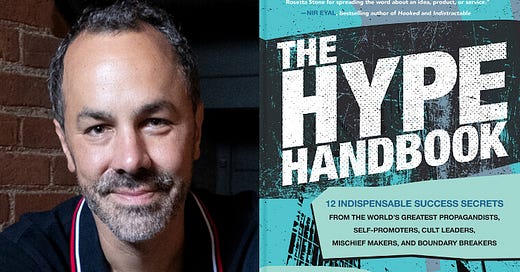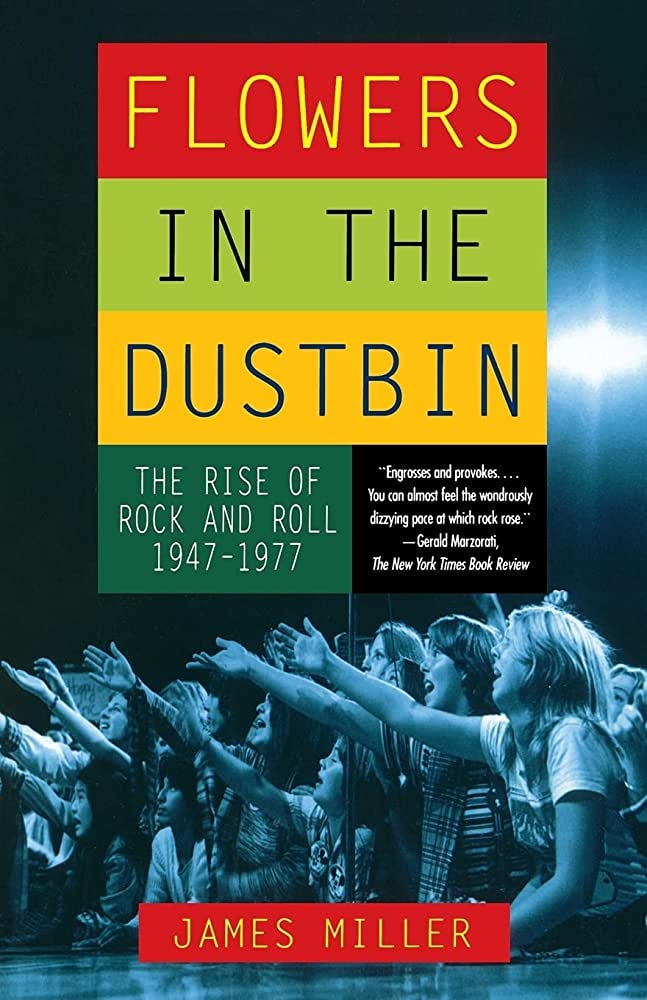When Musicians Become Hype Artists
By Guest Contributor Michael Schein
Why do I write about music so often?
For one, I like it. I’ve played guitar since I was thirteen and even took a stab at trying to make it as the frontman of an electro-glam-punk band (whatever that is) in my early twenties.
But there’s a second, more relevant reason as well.
The music business is full of some of the best hype artists on earth.
Most of the people attracted to music as a way of life tend to be outsiders. They are largely unemployable. They prefer to wake up around two in the afternoon. Their clothing choices often raise eyebrows…until everyone starts copying them.
These outsiders aren’t usually able to use traditional methods of achieving success. As such, they often pioneer unorthodox ways of solving problems, attracting attention, and gaining fans.
These are skills everyone in business should work to master.
Each of the following books about the music business contain lessons about promotion, branding, and sales that put traditional marketing books to shame. Check them out.
Please Kill Me: The Uncensored Oral History of Punk by Legs McNeill and Gillian McCain
Make your bed every day. Develop the right habits. Time block your calendar. Eat clean.
If you’re looking for advice on how to become a winner, the Business Section of your local Barnes & Noble is full of material for you. Unfortunately, winners are tough to emulate. They’re also boring. Losers, on the other hand, are masters of turning trash into treasure.
Please Kill Me is an oral history of the earliest wave of artists and musicians who created what is now widely called "punk rock." They were, to a one, misfits and losers. In these pages, you’ll encounter a cast of burnouts, wasteoids, runaways, basket cases, and freaks.
No one was letting the members of the New York Dolls, Ramones, Television, or the Talking Heads into Studio 54 (at least not at first). They had to create their own scene at the grimiest of bars (CBGB) on the scuzziest of streets (the Bowery). Yet the cultural impact what they built has far outlasted the work of their more glamorous contemporaries.
If you’re an ambitious person who is tired of benchmarks, game plans, checklists, and time frames, Please Kill Me is the book for you.
Our Band Could Be Your Life: Scenes From the American Indie Underground, 1981-1991 by Michael Azeraad
Before DIY was a hallmark of cable TV home improvement shows, it was a signature term of the 1980s American independent rock movement. Inspired by punk, an informal network of "Do It Yourself" bands, promoters, fanzine publishers, and homegrown labels sprung up to provide recordings, shows, and venues for strange and interesting musical artists mainstream record labels had no interest in.
By profiling eleven of the most influential of these artists, journalist Michael Azeraad’s Our Band Could Be Your Life reveals an alternative way of doing business with applications in every field. While there is so much talk in the rah-rah motivational world about turning obstacles into opportunities, the people featured in this book actually did it.
Will You Miss Me When I’m Gone?: The Carter Family and Their Legacy In American Music by Mark Zwonitzer with Charles Hirshberg
In the 1920s an Appalachian dreamer named A.P. Carter set about collecting a wide range of traditional songs from his region—English and Scottish ballads, gospel numbers, African American blues—and brought them home to arrange and perform with his wife Sara and sister-in-law Maybelle.
When a big city record executive from Camden, New Jersey put out a call that he was coming to the area looking for "hillbilly" performers, A.P.’s trio went into town and recorded their material for the man. What followed was the creation of a new genre—country music—as well as its first superstars.
In addition to containing a wealth of insights and lessons about the intersection of art and business, the story told in this book is a real family drama replete with the perils of stardom, betrayal, and the inherent difficulties in passing the torch. Readers will also recognize some familiar names who come into the tale at various points like June Carter (a member of the second generation of country music’s First Family) and her husband Johnny Cash.
Flowers in the Dustbin: The Rise of Rock and Roll, 1947 – 1977 by James Miller
Rock and roll will never die?
Untrue, says Flowers in the Dustbin author James Miller.
According to him, it died somewhere around 1977.
Miller makes the case that rock went through its full evolution over a twenty five year period, becoming obsolete as a creative force four-and-a-half decades ago. It’s a controversial argument, and one which many of the authors of the other books on this list might take issue with. But it is is a helpful paradigm for knowing when to seize an opportunity to become part of something new and exciting and when to move on.
Side note: For those of you who enjoyed The Hype Handbook, my story about how repetition created the Top 40 Radio Format comes from this book.
The Big Payback: The History of the Business of Hip-Hop by Dan Charnas
Has there ever been a musical genre—or any art form, for that matter—as integrally tied to commerce as hip hop?
While early rock and roll artists once sang about blue suede shoes and automobiles, rappers have, from the beginning, included actual brand names in their songs (Think: "My Adidas" by Run DMC, "Versace" by Migos, etc.). While rock starts are supposed to remain "authentic," rappers are lionized for founding their own labels, launching clothing brands, and branding high-end headphones.
The Big Payback addresses this relationship head-on by presenting the entire history of hip hop through the lens of business. It begins with little known stories about how a handful of African American DJs increased attendance at discos by "rapping" over popular dance songs and block party organizers who were as pivotal to rap's founding as the artists themselves.
We get a look at the people who saw opportunity in this new genre in its early days and founded companies as a result. We learn the ins-and-outs of how deals got done and how records got funded and how star careers were built. We learn about how artist-entrepreneurs like Jay-Z and P. Diddy ensured that rap would remain a largely black-controlled industry, unlike rock which came before it.
Whether you’re a fan of the music or simply want to learn how a phenomenon gets built deal by deal, The Big Payback is worth reading.
If you haven’t already, also check out The Hype Handbook: 12 Indispensable Success Secrets From the World’s Greatest Propagandists, Self-Promoter, Cult Leaders, Mischief Makers, and Boundary Breakers by Michael F. Schein.
A Note From Diamond-Michael Scott:
“Great Books, Great Minds” is my full-time work and life passion, a labor of love fueled by the endless hours of work I put into researching and writing these feature pieces. So if you enjoy this digital newsletter, find it valuable, and savor world-class book experiences featuring epic authors and book evangelists, then please consider becoming a paid supporting member at $6.00 a month or $60.00/year.






